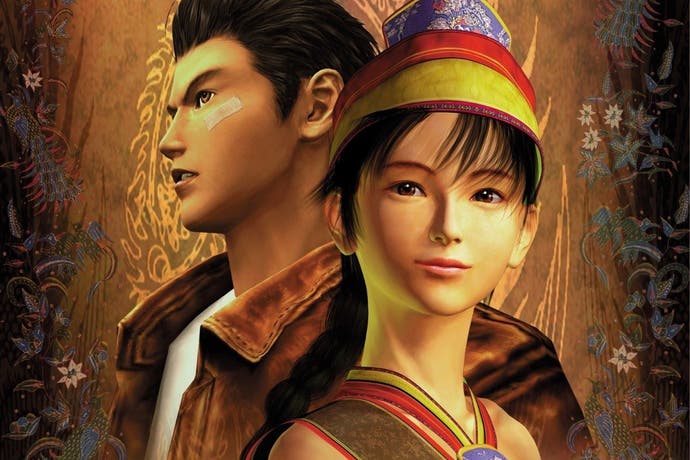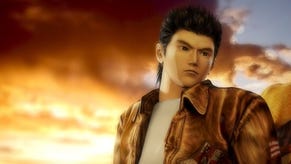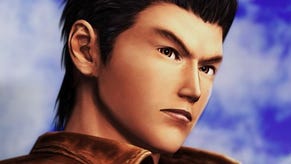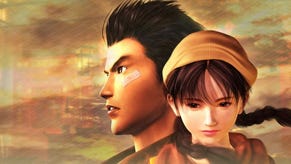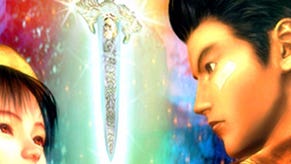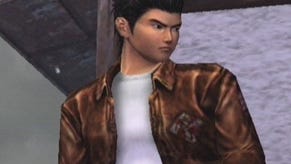What makes Shenmue 2's open world so special?
Kowloon fan.
There's so much of it, it feels impenetrable. Shenmue 2's Hong Kong isn't the biggest of open worlds, and unlike the Yokosuka suburb that preceded it, it can hardly claim to be the densest. Yet AM2's Hong Kong is thick with character and purpose: an overwhelming city where you sink into a gentle rut amidst its wider rhythms, where human life flows through its streets, ebbing in from the harbour before it splashes down sidewalks and sends slow, chattering oxbows around cluttered alleyways.
It's a common banality to mark Hong Kong as a city of contrasts; where the stiff-lipped colonies clash with traditional Chinese culture, where east meets west and tradition meets modernity. That's all hokum, though, and Shenmue 2's not one to deal in such platitudes. It gets down to a greater truth about not only this city, but all great metropolis: the unknowable sprawl, where the urban space is painted as eternally indifferent.
Shenmue 2 came to the Dreamcast less than a year after the original - in Europe, at least - yet it offers a steep shift in scale and tone. Having slowly tracked your father's killer Lan Di through Yokosuka and beyond Japan, as Ryo Hazuki you find yourself on the shores of Hong Kong, taking up the quest in typically ponderous fashion. Like Shenmue before it, this isn't a game about revenge, or even one fuelled by bloodlust. Its essence is something more pedestrian, more profoundly ordinary.
The small-town streets of Yokosuka are witnessed through the safe cocoon of adolescence. Every morning there's money waiting for you on the counter, your days spent killing time with the cushion of your own home to return to, the pillow of your own bed to crash back on. In Shenmue 2, away from the care of Haruki's housekeeper Ine Hayata, you're left to fend for yourself, your first hours in the city spent looking for nothing more than a pocketful of change and a roof over your head.
It can be a cruel city, too - stepping off the boat from Japan, you're confronted with the hot, hostile breath of the place, a photographer shoving his camera in your face and later forcibly trying to sell you the resulting picture. Step past the harbour, beyond the fountain and past the brownstone houses, and the bag containing all the possessions you gathered throughout the first game is stolen. It later returns, but all the money is gone for good: Shenmue 2's opening impresses nothing more than the adult world pressing down hard upon Ryo's shoulders.
Shenmue was a plodding game, and in those first few hours traipsing around the streets of Wan Chai without a penny to your name its sequel is no different. Aside from the downbeat drama of having your possessions stolen, its biggest moment comes when you help a bystander straighten the sign on his shop. Such is the rhythm of Shenmue; slow, hypnotic and happy to dwell on the smaller detail, drawing you deep into its world with developer AM2's broad, uncomplicated strokes. Creator Yu Suzuki clearly relished the larger canvas he'd been given with the series, a step beyond the three minute arcade ditties he'd been used to crafting in the likes of OutRun, Afterburner and Space Harrier, yet Shenmue shares the same blunt brilliance of his earlier work. Simplicity always wins out, even amidst the complexity of an open world.

It's an approach to what soon became a video game staple that sadly never caught on, in mainstream circles at least. Grand Theft Auto 3 came out a couple of months before Shenmue 2, its cartoon bombast, hyper-violence and psychopathic tendencies laying a template that's still at the heart of the genre almost 14 years on. It's a template hard-wired for spectacle, even if it's left lacking elsewhere: play Sleeping Dogs, United Front's 2012 contribution to the long line of games that have followed in Grand Theft Auto 3's wake, and it's hard not to be impressed by all that dazzle and all that flair, yet its Hong Kong, luxurious in neon and rich in texture, feels like half the city of that in Shenmue 2.
This Hong Kong is a different kind of open world - there's no mini-map, no litany of side-quests and objectives. There's just a strange petri dish of digital life which you're free to swim amongst as you work through the city. Speaking to strangers doesn't kickstart all-new quest lines, but instead just gives colour and context. It's Suzuki's taste for simplicity striking again, but look beyond that and Shenmue 2's inhabitants form a remarkably dense web of relationships and professions, an invisible tangle that conspires to make the streets you walk upon feel that little more real.
With the vestiges of that other track of open world design absent, you're free to drink in the detail. A large part of the original Shenmue's appeal was in its grounded escapism, and in how it transported players to a not-so-distant place - there was the thrill of visiting rural Japan, as well as that of tripping back to the 80s for a dose of culture that's several steps removed from our own. In Shenmue 2 Ryo's an outsider, in thrall to the intoxicating experience of seeing a new culture for the first time.
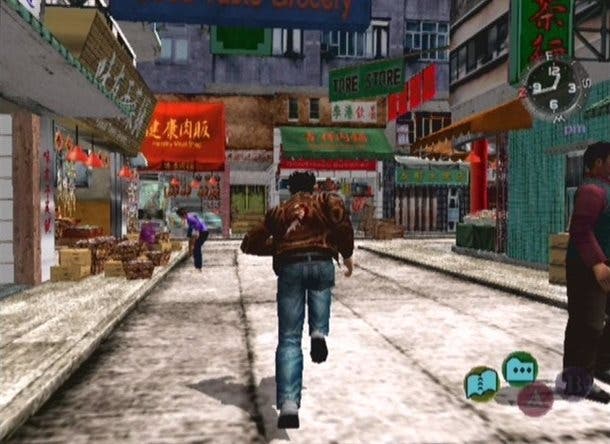
It's that outsider's eye that brings Shenmue 2's Hong Kong to life: the impossible bustle of Wan Chai, its streets overflowing with stallholders while bright, indecipherable signs criss-cross the sky; the bamboo scaffolding in the grotty Wise Men's Quarter that tells of the impending regeneration; the peace to be found in Man Mo Park, where small crowds gather to partake in public exercise. There's the accumulation of those details that means strolling through the streets soon becomes overwhelming.
Scratch away at the stone of this Hong Kong and you'll see past and future lives of Shenmue crashing together. This is a bigger game than its predecessor - with the first game taking in the opening section of the Shenmue story, the sequel takes in three whole chapters - and it carries with it more flavours. In Shenmue 2's first chapter, spent exploring the streets of Hong Kong, there's the carryover of the idiosyncratic ideals of the first Shenmue. In its second chapter, set amongst the crumbling towers of Kowloon's now vanished walled city, there's a glimpse of the series' roots as a Virtua Fighter RPG, Ryo's quest strung together by a series of staged bouts which come with their own special caveats: defeat the fighter with one eye by sticking to his weak side, or claim victory single-handedly in using just one fist.
In the third chapter, taking in that long walk through the green walkways of Guilin with Shenhua by your side, there's a template for the third game that now, against all odds, has become a reality. It's where a more personal Shenmue began to form, the big open cityscape of Hong Kong disappearing beyond the dense tree canopies as that grand scope folded in on itself. Maybe Shenmue 3 was always intended to be a smaller game, even before its long journey to development saw it return as a crowdfunded indie project, and where it no longer carries the hopes and pressures of a struggling company on its way out of the console market. Now it holds the far greater hopes and pressures of the fans that are helping bring it to life - but if Yu Suzuki sticks true to his open world template that's largely gone untouched in all those years since, maybe he could really weave that Shenmue magic a third time.
